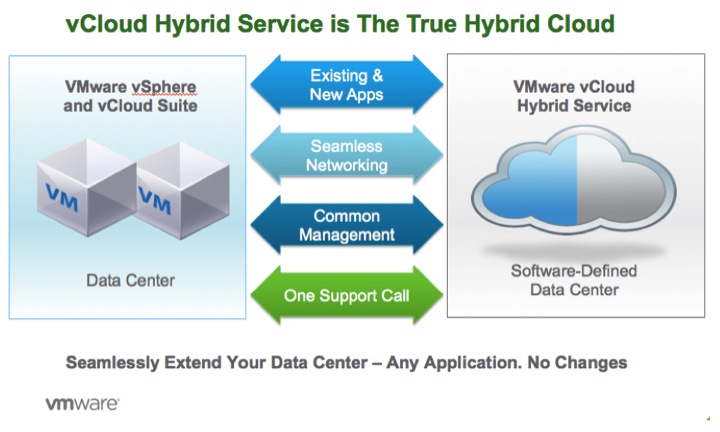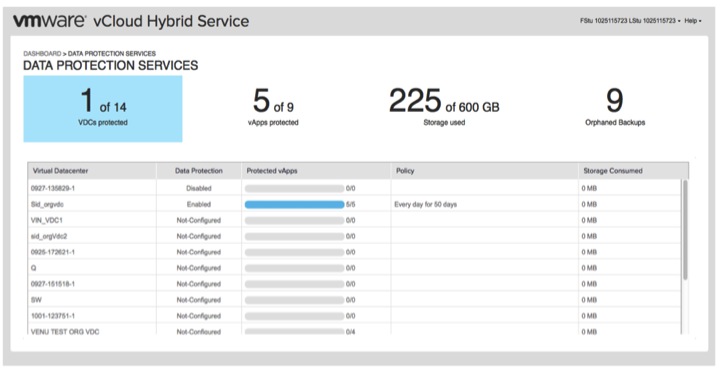(This post on VMware vCHS Data Protection was written by Phil George and Yatin Patil.)
The battle for off-premise workloads continues – service providers are racing to sign up tenants, and differentiate themselves against the big gorillas (who shall not be named 😉 ) in the cloud. Everyone is sizing up the cloud – it’s attractive to lower your IT costs by getting out of the datacenter management business. Infrastructure as a Service (IaaS) is an opportunity for IT to solve problems at lower cost, and with greater speed. We saw the “first wave” of adoption of IaaS focused on reduced data center costs and consolidation, but now a “new wave” of enterprise hybrid cloud adoption is in process. IT leaders are innovating ways to solve tough challenges with public cloud offerings. One example is data protection and disaster recovery.
Unfortunately what are actually running in the public cloud today are the second or third tier web-based apps, not the mission-critical applications. Why?
Providing IaaS services is just one part of running a cloud. Trusting the recoverability of your applications, and time to recover after a failure is what sets apart a commodity IaaS cloud from an enterprise hybrid cloud – one that’s built for running enterprise applications, along with all the data protection capabilities you’ve come to trust in your datacenter. Without those would you risk running your mission critical apps there?
VMware announced the vCloud Hybrid Service (vCHS) last year, as an enterprise hybrid cloud. Unlike most other cloud offerings, it debuted with a data protection service, providing backup and recovery for hosted applications. Recently they enhanced the data protection service, to provide significantly more self-service and automation capabilities.
Why is that cool?
We have to say this is the first backup service for cloud-hosted applications. And we mean true backup and recovery for cloud applications – not an archive solution trying to pass itself off as a backup solution. It’s even cooler because VMware chose EMC Avamar and its industry-leading integration with the VMware stack, and the rugged scalability and performance of Data Domain protection storage as the baseline technology components of the data protection service. But the real smarts of the service lie in a federation layer that sits above Avamar and Data Domain, extending vCloud Director (vCD) to provide backup extensions built right into it, while orchestrating the underlying backup software and protection storage appliances. This is the layer that creates a backup service for vCD, using standard VM backup and recovery components. Integrating backup into vCD means integrating into the vCD APIs, understanding and working with the SDDC platform components in vCD, to provide backup extensions natively into vCD itself. That’s what EMC and VMware achieved together, in bringing this service to vCHS.
WATCH THIS AVAMAR PLUG-IN FOR vCLOUD DIRECTOR DEMO
Kudos to both the EMC Data Protection and VMware teams for pulling off this feat. The vCHS Data Protection capabilities are a collaborative development effort between EMC and VMware engineers, working together to integrate the software deeply into both vCD and the vCHS service environment to make it work seamlessly. At the other end the vCHS tenants interact with a slick web portal, assigning backup policies to their applications, not having to know about the Avamar technology that underpins the service and works in the background to protect their applications.
But wait, there’s more. What works for VMware can work just as well for any other Service Provider building a vCD based cloud. EMC’s Data Protection & Availability Division has done just that by including the Avamar Plug-in for vCloud Director in its latest release of Avamar 7.1.
Let us know what you think – leave us a comment below.
For more information read the vCHS Data Protection Data Sheet and visit VMware vCHS.


